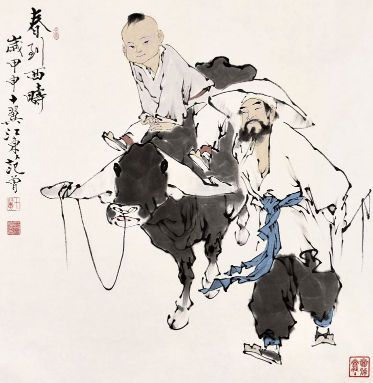随着人们生活水平和文化素质的不断提高,历来为文人雅士所喜爱的古玩、字画等藏品,越来越多地走进寻常百姓家,我国各地古玩文物也日趋红火。古玩又称古董,其内容包罗万象,五花八门,陶瓷、奇石、玉器、铜器、书画、票据、老旧家具、今古钱币、竹木根雕、古旧书籍、日用物品……总而言之,凡今天以前的东西,只要你觉得有意思收而藏之的,似乎都叫古玩,没有一个特别的定义。茶余饭后,闲暇时节,或独自一人,或邀上三两知己好友,细细把玩品评,便可使人恍然间仿佛穿越了时空,遨游于岁月长河中。
With the continuous improvement of people's living standards and cultural quality, antiques, calligraphy and painting and other collections, which have always been loved by literati and refined scholars, have increasingly entered ordinary people's homes, and the trade of antiques and cultural relics across China is becoming more and more popular. Antiques, also known as antiques, have a wide range of contents, including ceramics, rare stones, jade, bronze, calligraphy and painting, bills, old furniture, modern and ancient coins, bamboo and wood root carvings, ancient books, daily necessities... In a word, everything before today, as long as you feel you want to collect it and hide it, seems to be called antiques without a special definition. After dinner, in leisure time, or alone, or invite three or two close friends to play and comment carefully, you can make people suddenly seem to travel through time and space and roam in the long river of years.
如追溯历史,自有文字记载的商周以来,玩古物一直是帝王、宦官、文人士大夫的文化传统。这种传统一直在延续了三千多年。直到清末民国,几乎在任何一个有学问、有身份、有地位的文人官员府第,墙上多多少少会挂上几幅名人字画,厅堂上多多少少会摆上一圈红木桌椅,案几上多多少少会供上一些陶瓷、玉雕、奇石作为摆设。
For example, tracing back to history, since the Shang and Zhou dynasties with written records, antiquities have always been the cultural tradition of emperors, eunuchs and literati. This tradition has continued in China for more than 3000 years. Until the late Qing Dynasty and the Republic of China, in almost any literati official residence with knowledge, status and status, several celebrity calligraphy and paintings were hung on the wall, a circle of mahogany tables and chairs were placed in the hall, and some ceramics, jade carvings and strange stones were provided on the table.
古玩收藏已经成为一种时尚。
Antique collection has become a fashion.

除了用墨汁,彩色颜料,传统书画工具还有毛笔、宣纸和朱砂等。
In addition to using ink and color pigments, traditional calligraphy and painting tools include brush, rice paper and cinnabar.
字画在古玩中属于特别娇贵的一类。其贵在于它是纯艺术品,一些名人字画更是稀世之宝。由于书画作品的材料都是纤维质的纸张和丝绢,在纸张制作或字画装裱中又加入有动物胶、淀粉、浆糊等酸性材料,这就使字画品遇到潮湿、光和热等,会发生霉变、虫蛀、褪色变黄、老化发脆。可见,掌握字画的保养,对收藏字画是非常有帮助。
Calligraphy and painting belong to a particularly delicate category in antiques. Its expensive is that it is a pure art, and some celebrity calligraphy and painting are rare treasures. Since the materials of calligraphy and painting works are fibrous paper and silk, acidic materials such as animal glue, starch and paste are added to the paper production or calligraphy and painting mounting, which will lead to mildew, moth eaten, fading, yellowing, aging and embrittlement when the calligraphy and painting works encounter moisture, light and heat. It can be seen that mastering the maintenance of calligraphy and painting is very helpful for collecting calligraphy and painting.
字画的鉴定技巧和保养方法
Identification skills and maintenance methods of calligraphy and painting
收藏字画时不要用手直接接触作品,应戴上手套,以免字画被汗渍污染和指甲划破。欣赏字画时要避免阳光直射作品。字画开卷闭卷不能过于用力。若出现折痕,可在字画背面喷些水使其润湿,然后贴在玻璃上晾干或用低温熨斗熨烫一下,折痕即可。
When collecting calligraphy and paintings, don't touch the works directly with your hands. You should wear gloves to prevent the calligraphy and paintings from being polluted by sweat and scratched by nails. When appreciating calligraphy and painting, avoid direct sunlight. The opening and closing of calligraphy and painting should not be too hard. If there is a crease, spray some water on the back of the calligraphy and painting to wet it, and then stick it on the glass to dry or iron it with a low-temperature iron.
字画在存放时要注意防潮防光防尘。藏室要保持适宜的温湿度。灯光的强度也要控制,字画珍品需要放进囊匣中置阴处保存,不要轻易见光。
When storing calligraphy and paintings, pay attention to moisture, light and dust prevention. Proper temperature and humidity shall be maintained in the storage room. The intensity of light should also be controlled. Calligraphy and painting treasures need to be put into the bag box and stored in the shade. Don't see light easily.
如果字画被泥土、墨水、油脂等弄脏,要进行清洗。一般情况下,只要用软性的毛笔或刷子轻轻将不洁物干擦掉。如污斑严重,可局部湿洗,用棉花球或毛笔蘸些清洗剂,将污迹擦去,并随时用吸墨纸吸掉液体,用清水蘸残留的清洗剂,操作时要谨慎行事,以免损坏书画。
If the calligraphy and painting are soiled by soil, ink, grease, etc., they should be cleaned. Under normal circumstances, just use a soft brush or brush to gently wipe away the dirt. If the stain is serious, it can be wet washed locally. Dip some cleaning agent with cotton ball or brush to wipe the stain off, and suck the liquid with blotting paper at any time. Dip the residual cleaning agent with clean water. Be careful during operation to avoid damaging calligraphy and painting.
为了防止字画霉变虫蛀,可进行。一种方法是用、杀虫剂进行熏蒸,另一种是将防霉变的纸夹在书画中,效果也很好。
In order to prevent moldy and moth eaten calligraphy and painting, it can be carried out. One method is fumigation with and insecticides, and the other is to clip mildew proof paper into calligraphy and painting, which also has a good effect.
字画的画面如出现蛀孔、裂缝或残缺,可进行嵌补。方法是将一张与旧字画的质地、颜色相近的修纸粘在要嵌补处,接口要均匀,晾干后用卵石反复平整,以不露修补痕迹。如果修纸与原字画的纸色仍有反差,可用茶叶水或颜料润涂,力求色调和谐。用相同的笔墨、手法将画面的缺笔接上补全。
If there are cavities, cracks or deformities in the picture of calligraphy and painting, it can be inlaid. The method is to stick a piece of repair paper similar to the texture and color of the old calligraphy and painting to the place to be inlaid and repaired, and the interface shall be uniform. After drying, it shall be leveled repeatedly with pebbles to avoid the repair trace. If there is still a contrast between the paper color of the repaired paper and the original calligraphy and painting, it can be moistened with tea water or pigment to strive for harmonious tone. Use the same pen, ink and technique to complete the missing pen of the picture.
鉴定工具
Identification tool
字画鉴定仅仅凭借肉眼与经验识别,其可靠性有很大的局限性,也存在困难并很难形成说服力,尤其是在拍卖现场或研讨会上;行业内都通过辅助性的便携式视频显微镜来进行现场识别! 如Anyty的MSA200\WM401TV等显微镜识别可把微小的东西放大,在100-200倍率左右就可很清晰看到宣纸的材质、墨迹的深浅、印章的细节、力度等信息,在显微镜下一目了然,有经验的古画、字画爱好者,根据这些信息,就可判断字画的年代、出入及真伪。
The identification of calligraphy and painting only depends on the naked eye and experience. Its reliability has great limitations, and it is difficult to form persuasion, especially at the auction site or seminar; The field identification is carried out through auxiliary portable video microscope in the industry! For example, any's msa200 \ wm401tv and other microscope recognition can magnify small things. At about 100-200 magnification, you can clearly see the material of rice paper, the depth of ink, the details and strength of seal and other information. It can be seen at a glance under the microscope. Experienced ancient painting and calligraphy lovers can judge the age, access and authenticity of calligraphy and painting according to these information.
也因便携式视频数码显微镜的分享性比较强,适用于现场(拍卖会、客户现场、朋友间的分享);又可实时拍照摄像,可进行对比存储;且便携式数码显微镜一般都有对比及测量功能,是辅助书画的鉴定分析工具。
Also because the portable video digital microscope has strong sharing, it is suitable for on-site (auction, customer on-site, sharing among friends); It can also take pictures in real time, and can be compared and stored; And portable digital microscope generally has the functions of comparison and measurement. It is a tool to assist the identification and analysis of calligraphy and painting.
此外,比如说印章或签名、材质、题跋、收藏印、着录、装裱等这些都是可用来鉴别书画的辅助手段。印章是书画的证明物,作者以此证明确为自己创作,而鉴赏家则以此表示自己的鉴别。若干件书画作品常常使用同一印或几印,不会每件作品都新刻一印,所以从印章的真伪来鉴别书画的真伪,尤其是通过对数件作品印章的比较来鉴别,是有相当根据的。材质对书画的鉴定也是非常重要的,不同的材质有不同的特点,在不同的材质上作书画,会有不同的效果。尤其在国画和油画等大相径庭的画种中表现突出,即便在同一画种内部,材质引起的差别也不小,而这种差别与作家的喜好以及当时可取的便利条件有关。当然除了这些以外,题跋、鉴藏印以及着录也对鉴定书画有一定的帮助。
In addition, for example, seal or signature, material, inscription and postscript, collection seal, recording, mounting and so on are all auxiliary means that can be used to identify calligraphy and painting. The seal is the proof of calligraphy and painting. The author uses it to prove that he created it for himself, while the connoisseur uses it to express his identification. Several calligraphy and painting works often use the same seal or several seals, and each work will not be engraved with a new seal. Therefore, it is quite reasonable to identify the authenticity of calligraphy and painting from the authenticity of seals, especially through the comparison of seals of several works. Material is also very important for the identification of calligraphy and painting. Different materials have different characteristics. Making calligraphy and painting on different materials will have different effects. Especially in Chinese painting and oil painting, which are quite different from each other. Even within the same painting, the difference caused by material is not small, and this difference is related to the writer's preferences and the desirable convenience at that time. Of course, in addition to these, inscriptions and postscripts, seal collection and recording are also helpful to the identification of calligraphy and painting.
鉴定技巧
Identification skills
(一)作品的时代风格
(1) The style of the times
每一件书画作品都有其时代风格,这是与其所处时代的政治、经济、生活习俗以及物质条件紧密相关的.比如说,山水画在一开始时是不讲究比例的,“人大于山,水不容泛”是它的时代特征。因此,早期的山水画多摄取全形,而等到后来画家知道只要按照比例就可以将大自然缩写在画幅中时,取景才开始向局部发展。
Every painting and calligraphy is closely related to its time, political and life style For example, landscape painting did not pay attention to proportion at the beginning. "People's Congress is on the mountain, and the water cannot be flooded" is its characteristic of the times. Therefore, the early landscape painting mostly absorbed the whole shape, and it was not until later that the painter knew that nature could be abbreviated in the painting frame according to proportion that the framing began to develop locally.
书法也是一样。从文学方面来看,不论书写的是诗是文、词汇的运用、事迹的叙述、思想感情的表达等,都能看出它的时代风格。另外书札行款格式和书画件幅也对鉴定书画有一定的帮助
Calligraphy is the same. From the perspective of literature, we can see its style of the times whether it is writing poetry or literature, the use of vocabulary, the narration of deeds, the expression of thoughts and feelings, etc. In addition, the format of letters and lines and pieces of calligraphy and painting are also helpful to the identification of calligraphy and painting
(二)艺术家的个人风格
(2) Artist's personal style
个人风格通常要比时代风格具体得多,艺术家的思想、性格、审美观、习惯甚使用的工具都各有特点。作画时的运笔、线条、构图、人物相貌等无不反映出作者的个人风格特征。尤其是鉴定近现代的作品,由干时代相近,个人风格则尤其重要。“熟记画家一百八,书法家九十八”说的就是要了解历史文化,熟记历代着名书画家的姓名、字、号、别号,以及他们的经历和他们字、画的特征的道理。
Personal style is usually much more specific than the style of the times. Artists have their own characteristics in thought, character, aesthetics, habits and even tools. The pen movement, lines, composition and character appearance all reflect the author's personal style characteristics. In particular, the identification of modern works is similar to that of the dry era, and personal style is particularly important. "Memorize one hundred and eighty painters and ninety-eight calligraphers" means to understand history and culture, memorize the names, characters, numbers and nicknames of famous calligraphers and painters in previous dynasties, as well as their experience and the characteristics of their characters and paintings.

 发布时间:2022-02-17
发布时间:2022-02-17  作者:大雅堂美术馆
作者:大雅堂美术馆  文章来源:https://www.jndyt888.com/
文章来源:https://www.jndyt888.com/  浏览量:0
浏览量:0
